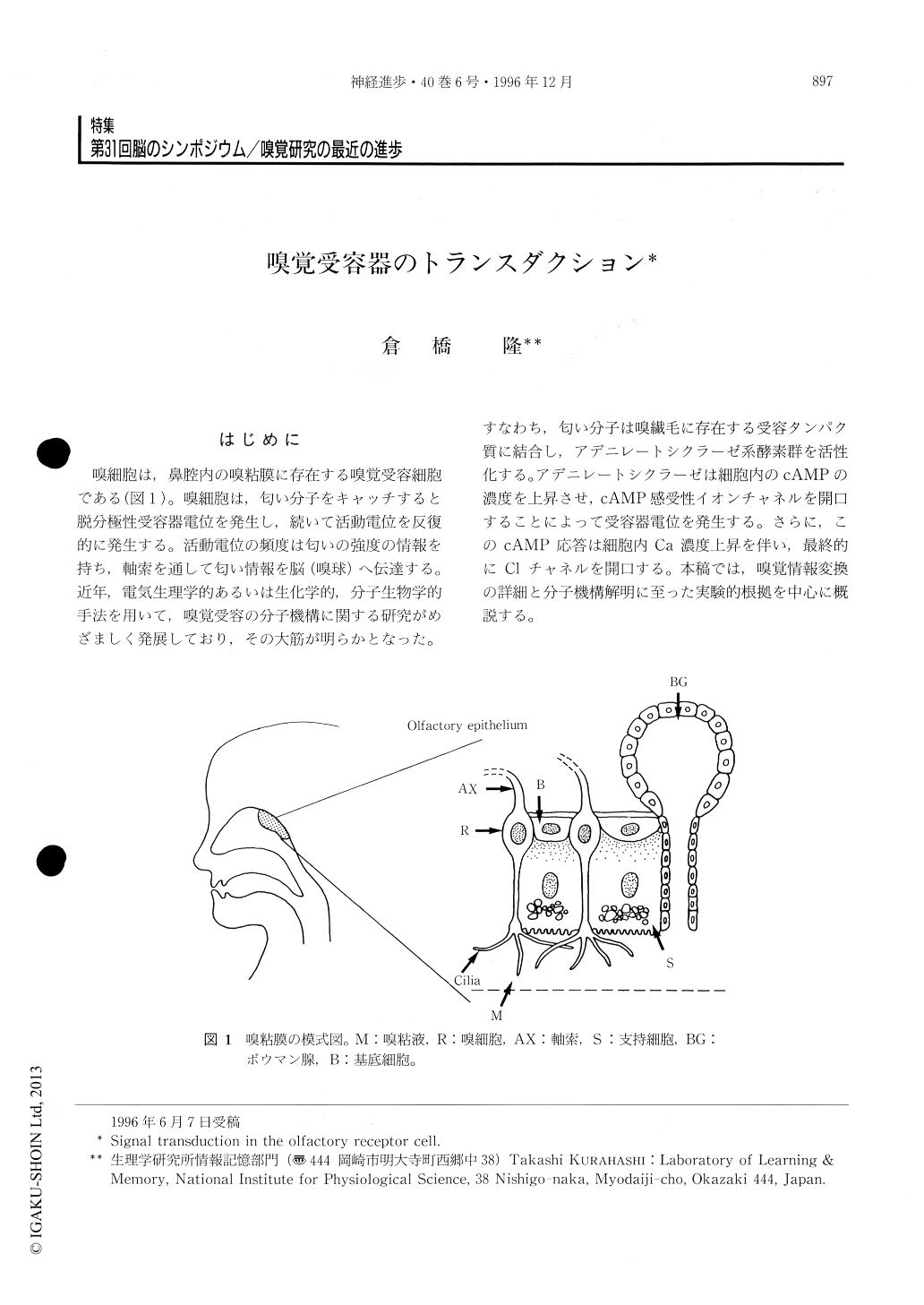Japanese
English
- 有料閲覧
- Abstract 文献概要
- 1ページ目 Look Inside
はじめに
嗅細胞は,鼻腔内の嗅粘膜に存在する嗅覚受容細胞である(図1)。嗅細胞は,匂い分子をキャッチすると脱分極性受容器電位を発生し,続いて活動電位を反復的に発生する。活動電位の頻度は匂いの強度の情報を持ち,軸索を通して匂い情報を脳(嗅球)へ伝達する。近年,電気生理学的あるいは生化学的,分子生物学的手法を用いて,嗅覚受容の分子機構に関する研究がめざましく発展しており,その大筋が明らかとなった。すなわち,匂い分子は嗅繊毛に存在する受容タンパク質に結合し,アデニレートシクラーゼ系酵素群を活性化する。アデニレートシクラーゼは細胞内のcAMPの濃度を上昇させ,cAMP感受性イオンチャネルを開口することによって受容器電位を発生する。さらに,このcAMP応答は細胞内Ca濃度上昇を伴い,最終的にClチャネルを開口する。本稿では,嗅覚情報変換の詳細と分子機構解明に至った実験的根拠を中心に概説する。
Odor stimulation induces a depolarizing receptor potential in the olfactory receptor cell. Olfactory transduction is mediated by a second messenger system using cAMP. Binding of odorants to the receptor protein located on the ciliary membrane activates G protein, which is followed by the activation of adenylate cyclase. The adenylate cyclase in turn generates cyclic AMP intracellularly. The ciliary membrane contains cAMP-gated channels which transduce the information into membrane depolariza-tion.

Copyright © 1996, Igaku-Shoin Ltd. All rights reserved.


